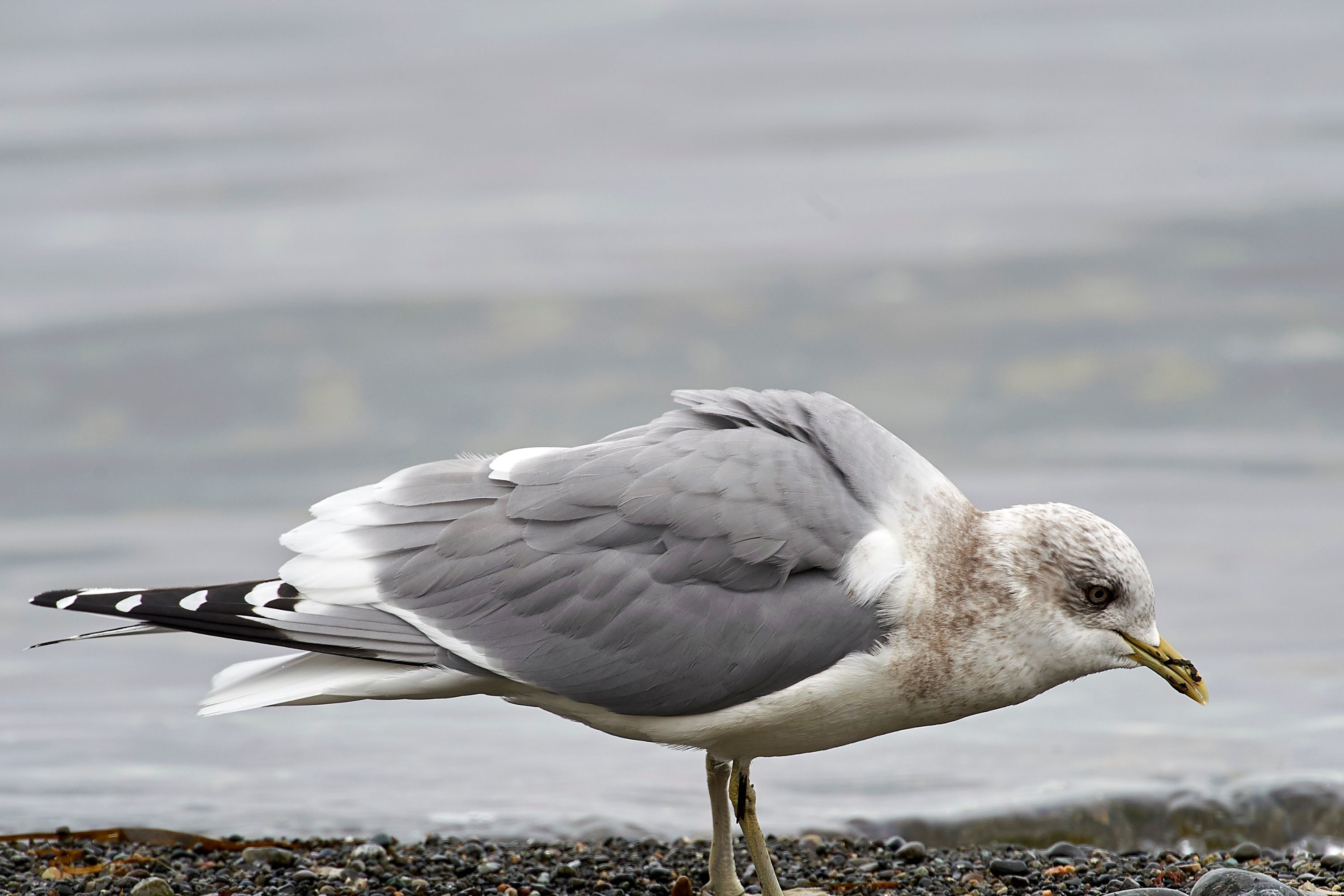Common gull
(Larus canus)

Description
Larus canus, commonly known as the common gull or the mew gull, is a medium-sized gull species found in the northern hemisphere. This bird species belongs to the Laridae family, which also includes other gull species such as the Herring Gull, Black-Headed Gull, and Great Black-Backed Gull. In this article, we will provide an in-depth overview of the physical characteristics, behavior, habitat, diet, and conservation status of the Larus canus. Physical Characteristics The common gull is a medium-sized bird, with a body length of approximately 40–45 cm and a wingspan of around 110 cm. This gull species weighs between 280-480g, with males typically being larger than females. The plumage of this bird is a combination of white and light grey, with a distinctive yellow bill and black eyes. During breeding season, the head and neck of this bird become darker grey, and the legs turn yellow. Younger birds have a darker plumage, with brown speckles on their back and wings. Behavior The common gull is an active bird species that tends to feed and fly in flocks. During breeding season, males will perform courtship displays to attract females. These displays include aerial acrobatics, calling, and nest-building. The common gull is also known to be highly territorial, with males defending their nests aggressively against other gulls or predators. Common gulls are highly social birds and often form large flocks, especially during the winter months. Habitat The common gull is a highly adaptable bird species that can be found in a variety of habitats. These birds are typically found in coastal areas, including estuaries, harbors, and beaches, but can also be found inland around freshwater bodies such as rivers, lakes, and reservoirs. The common gull breeds across the northern hemisphere, including Europe, Asia, and North America. During the winter months, this bird species will migrate southwards, where they can be found in large numbers along the coasts of western and southern Europe. Diet The common gull is an omnivorous bird species, meaning they feed on a variety of different foods. Their diet primarily consists of fish, mollusks, and crustaceans, which they catch by diving or scavenging along the shoreline. Common gulls also eat small mammals, such as rodents and voles, and will also feed on eggs and chicks of other bird species. During the winter months, when food is scarce, these birds will also scavenge for food in urban areas, such as garbage dumps and landfills. Conservation Status The common gull is classified as a species of "Least Concern" by the International Union for Conservation of Nature (IUCN). This classification means that the population of common gulls is stable, and there are no significant threats to their survival as a species. However, local populations of common gulls may face threats from habitat loss, pollution, and human disturbance, especially in urban areas. Conservation efforts to protect common gull populations include habitat restoration, monitoring, and education programs to reduce human disturbance. Conclusion The common gull, or Larus canus, is a medium-sized gull species found across the northern hemisphere. These birds are highly adaptable and can be found in a variety of habitats, including coastal areas and freshwater bodies. The common gull is an active bird species, often feeding and flying in flocks, and is highly social, forming large flocks during the winter months. These birds are omnivorous and feed on a variety of different foods, including fish, mollusks, and small mammals.
Taxonomic tree:







